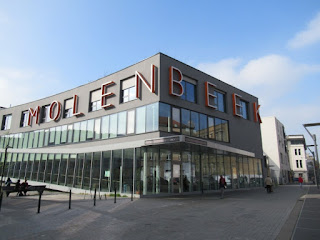
I stayed in England (in the Britain Island)
several days during my visit to Europe. It was my first stay in England in two
years.
There was a big demonstration in London
on Sat. Oct. 20 to demand the second referendum on Brexit. About 700,000 people
were reported to join it. It was the second largest demonstration in the U.K.’s
post-war history after the anti-Iraq war demonstration in 2003, which 2 million
people joined.
They also included:
Kids ans babies, (See also the top photo)
disabled people,
dogs,
and Superman(s).
Kids ans babies, (See also the top photo)
disabled people,
dogs,
and Superman(s).
It was not organized by the Remainers,
but most participants were pro EU. The slogans included:
"Stop Tory Brexit,"
"We demand a vote on the final Brexit deal,"
"Liars" and "Enemies of the people."
Supporters of Conservative, Labor and Liberal Democratic parties joined the march.
There were flags and signs of the U.K., EU, Ireland, several regions of the U.K.
After looking the demonstrators passing by about 2 hours, I joined the parade. I walked from the Green Park through Trafalgar Square and the Dawning Street to the Parliament. (See also the 2nd photo).
"Stop Tory Brexit,"
"We demand a vote on the final Brexit deal,"
"Liars" and "Enemies of the people."
Supporters of Conservative, Labor and Liberal Democratic parties joined the march.
There were flags and signs of the U.K., EU, Ireland, several regions of the U.K.
After looking the demonstrators passing by about 2 hours, I joined the parade. I walked from the Green Park through Trafalgar Square and the Dawning Street to the Parliament. (See also the 2nd photo).
The Brexit negotiations between EU and
the U.K. are not going well and the concerns over no-deal Brexit is increasing.
Newspapers write articles on Brexit every day (mainly on the conflicts in the
ruling Conservative Party).
There were many books related to Brexit
and the relations with EU in 2016 in the Waterstone bookstore in the Bloomsbury
district, where the Britih Museum (Photo) as well as the University Collage London and other university gather. Now,
they have less books on such topics. Much attention was payed to the books on
AI and the impacts of innovation I found.
The situation on Brexit is complicated
and it is difficult to foresee the future developments.
I found many changes in London in the
past two years.
Winston Churchill' s statue looked the construction. (See the 3rd photo)
Winston Churchill' s statue looked the construction. (See the 3rd photo)
Huge blocs were installed in the
sidewalks of the Westminster Bridge, where a terrorist attack happened in March
2017.
I also visited New Castle (left photo) and
Sunderland in the North East area (in the northern England). My train moved
from London through the East area (cities include Peterborough), East Midlands,
Yorkshire and the Humber (cities include York), and arrived in the North East. These five
areas all voted for “leave” in the 2016 referendum. Vote for leave gathered
nearly 60% in East Midland, Yorkshire and
North East.
Coal and textile industries flourished in
the past in these areas. Now, many cities and towns in these areas face
economic difficulties.
There spread meadows and agricultural
fields alongside the railway. The farms employed many immigrants from the Eastern
Europe. The number is decreasing after Brexit decision.
The streets were quiet near the
Sunderland railroad station.
The shopping mall was, however, crowded with people.
The shopping mall was, however, crowded with people.
I found no political campaign posters
on Brexit in both Sunderland and Newcastle.






















































